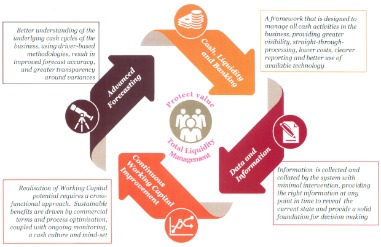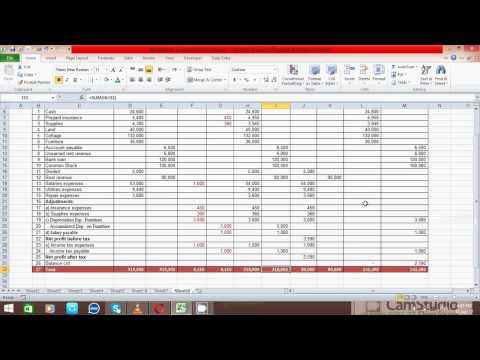Accounts Receivable: Mastering Effective Management Strategies

Further analysis never deduct these 9 expenses would include assessing days sales outstanding (DSO), which measures the average number of days that it takes a company to collect payments after a sale has been made. When a company owes debts to its suppliers or other parties, those are accounts payable. To illustrate, Company A cleans Company B’s carpets and sends a bill for the services.
- If your accounts receivable balance is going up, that means you’re invoicing more.
- Providing multiple payment options allows customers to remit with their choice method, giving them fewer excuses for failing to pay.
- It stands as a vital element in a firm’s working capital and cash flow management.
- A lower DSO indicates a faster collection of receivables, while a higher DSO may imply potential cash flow problems.
- Outsourcing can also bring in expertise that leads to a more efficient process and improved performance.
- It is an essential aspect of a company’s financial management, as it directly impacts cash flow and overall financial health.
Better Customer Experience
Organizations that still rely on manual invoicing techniques—and subsequently maintain poorer AR management processes—limit their cash flow and growth. Accounts receivable management is the process of monitoring and controlling money customers owe to a business for goods or services purchased on credit. AR management consists of policies and procedures that maximize account management efficiency and minimize the risk of bad debt. One of the most important and urgent steps to streamline receivables management is to automate the process. An example of AR management could be a company implementing a credit policy that includes extensive credit checks on potential clients.
AI-driven worklist prioritization to reduce manual work
The higher the ratio, the more efficient you are at collecting receivables. And while not a traditional metric, customer satisfaction is important in assessing the effectiveness of AR management. With an artificial intelligence accounting assistant, like Intuit Assist, you can help automate accounting tasks such as invoicing, payment reminders, and payment collection. It offers a sophisticated what is the difference between rent receivable and rent payable platform for accounts receivable automation, integrating seamlessly with other SAP tools. Its strength lies in providing a cohesive approach to financial management for large enterprises. In a nutshell, accounts receivable means what your customers owe you, while accounts payable signifies your obligations to suppliers.
Companies record accounts receivable as assets on their balance sheets because the customer has a legal obligation to pay the debt and the company has a reasonable expectation of collecting it. They are considered liquid assets because they can be used as collateral to secure a loan to help the company meet its short-term obligations. In extreme cases, a high level of uncollected AR could lead to bankruptcy. This ratio tells you how many times you’re collecting your average accounts receivable balance.
Data is hard to find and evaluate in real-time
Keeping timely, accurate transaction and payment records is central to accounts receivable management, too. Doing so ensures account balances are up-to-date and makes power and utility entities revenue recognition task force account reconciliation smoother. Most businesses operate on credit, but when you sell goods on credit, there’s always a risk that some customers may miss the due date, fail to pay the invoice and affect your cash flow. Accounts receivable management involves a set of methods, processes, and guidelines used by a company to handle the money it’s owed by customers. Automate the accounts receivable process to expedite payments and enhance cash flow.
Accounts receivable, commonly known as AR, refers to the funds that customers owe to a company. It’s an entry on the company’s balance sheet, reflecting sales that have been completed but not yet paid. These transactions typically occur on credit, signifying that the company has granted the customer a line of credit, and payment will be made later. A company provides services to a client and invoices the client for $5,000, with payment due in 30 days. In this case, the company would record a debit to accounts receivable for $5,000 and a credit to the revenue account for the same amount. When the client pays the invoice in 30 days, the company records a debit to the cash account for $5,000 and a credit to the accounts receivable account, reducing the receivable balance to zero.
Yet, managing it effectively can be a complex task fraught with challenges—from delayed payments to reconciliation errors. It is important to measure the various inputs and outputs of accounts receivable to support actions and to evaluate their effectiveness. This includes issuing dunning letters, which are collection notices sent to customers explaining that a payment they owe is overdue. A good set of credit policies will help the business extend constructive and reliable credit to its customers while minimizing the risk of default.

Open communication channels allow businesses to build positive customer relationships, making it easier and simpler to chase payments and settle disputes. The faster companies can collect payment from customers, the sooner they can use the resulting cash to cover operating costs, build resilience, generate returns from investment, or drive revenue growth. One of the best ways to streamline receivable management is to automate it.
What are the most common challenges with AR management?
In this way, modern, digital accounting help businesses enhance and improve their management of accounts receivable. Cash application is the process of matching incoming payments to outstanding invoices and to the proper account where they can be entered in the general ledger. To calculate average days delinquent, calculate DSO and best possible days outstanding (BPDSO), which represents the most ideal timeline that a company can expect to collect payments. The collection effectiveness index (CEI) calculates the percentage of receivables a company collects during a given period. CEI assesses collections efficiency over both regular intervals and long periods of time. Late payments aren’t always the buyer’s fault – the range of payment options the supplier offers can impact on-time payments too.

